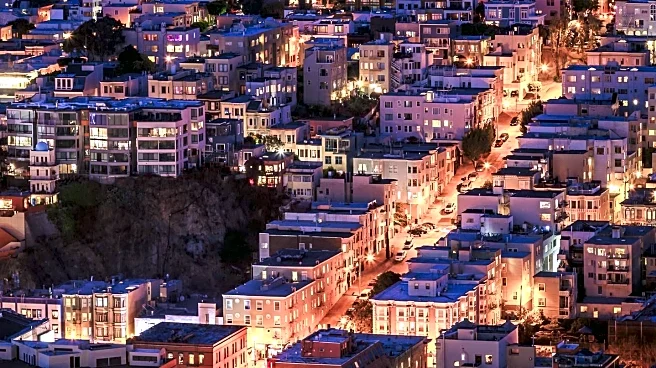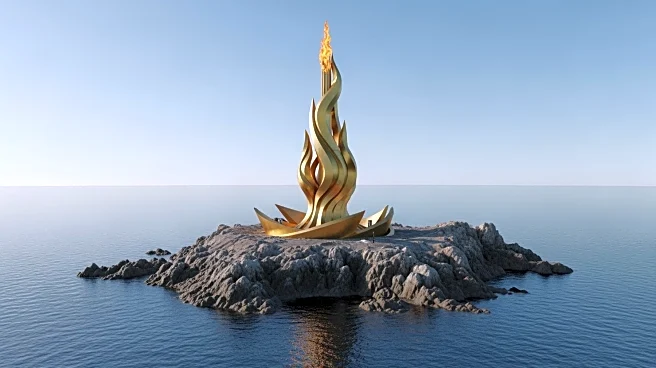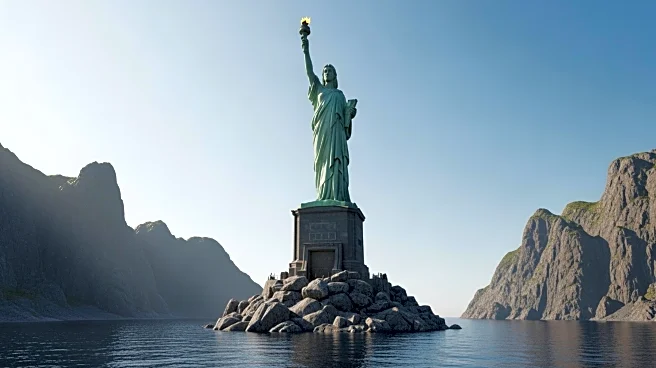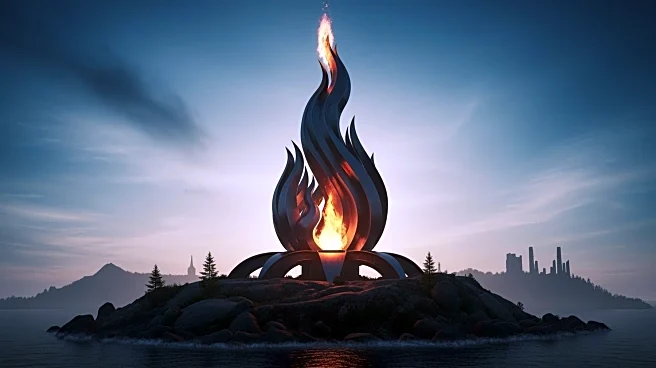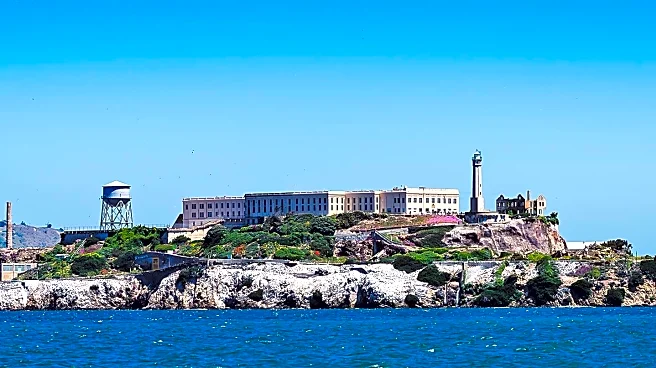What's Happening?
Ross Calvin, a Bitcoin mining entrepreneur, has proposed the construction of a 450-foot statue of Prometheus on Alcatraz Island, San Francisco. The project, estimated to cost $450 million, aims to symbolize
American innovation and technological progress. Calvin, who owns the Bitcoin mining company Parhelion, envisions the statue as a new icon of American ingenuity, surpassing the Statue of Liberty in height. The initiative is backed by the American Colossus Foundation, which promotes cultural renewal through self-sovereignty and imagination.
Why It's Important?
This ambitious proposal highlights the intersection of technology, art, and cultural symbolism. If realized, the Prometheus statue could become a significant landmark, attracting tourism and sparking discussions about the role of technology in society. The project also reflects the growing influence of the tech industry in shaping cultural narratives and public spaces. However, it faces potential challenges, including federal reviews and logistical hurdles, given Alcatraz's status as a national park and historical site.
What's Next?
The proposal will require extensive planning and approval from federal authorities, as Alcatraz is a protected site. Calvin plans to submit design proposals for review, which will likely involve public consultations and environmental assessments. The project's progress will depend on navigating these regulatory processes and securing the necessary funding. If successful, the statue could redefine Alcatraz's identity, shifting its association from a former prison to a symbol of technological empowerment.
Beyond the Headlines
The proposed statue raises broader questions about the cultural impact of monumental art and its role in shaping national identity. It also highlights the ethical considerations of using public spaces for private initiatives, particularly those driven by the tech industry. As discussions around the project unfold, it will be important to consider the diverse perspectives of stakeholders, including local communities, historians, and environmentalists.
